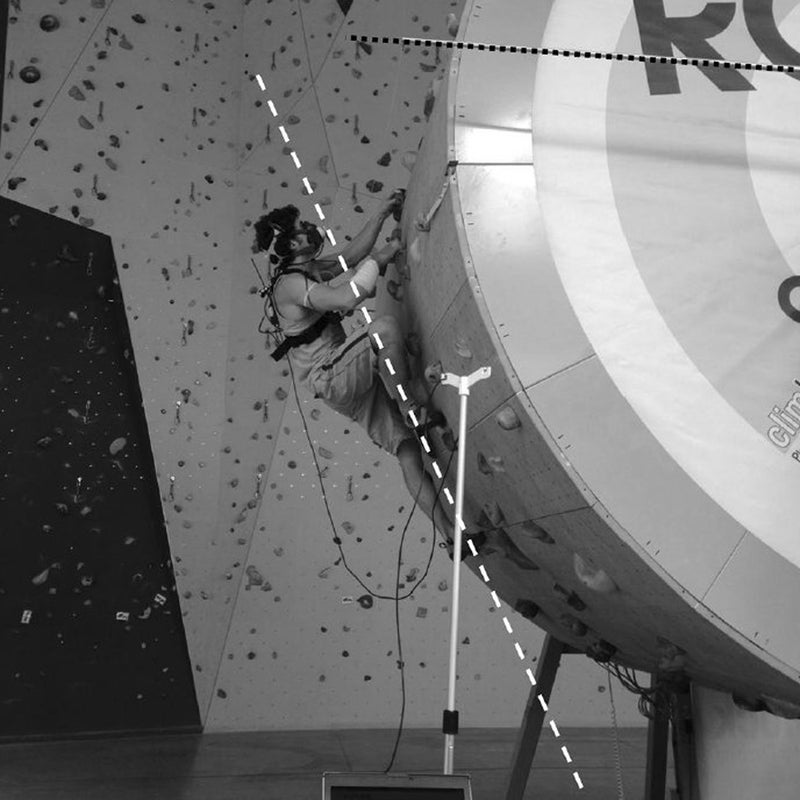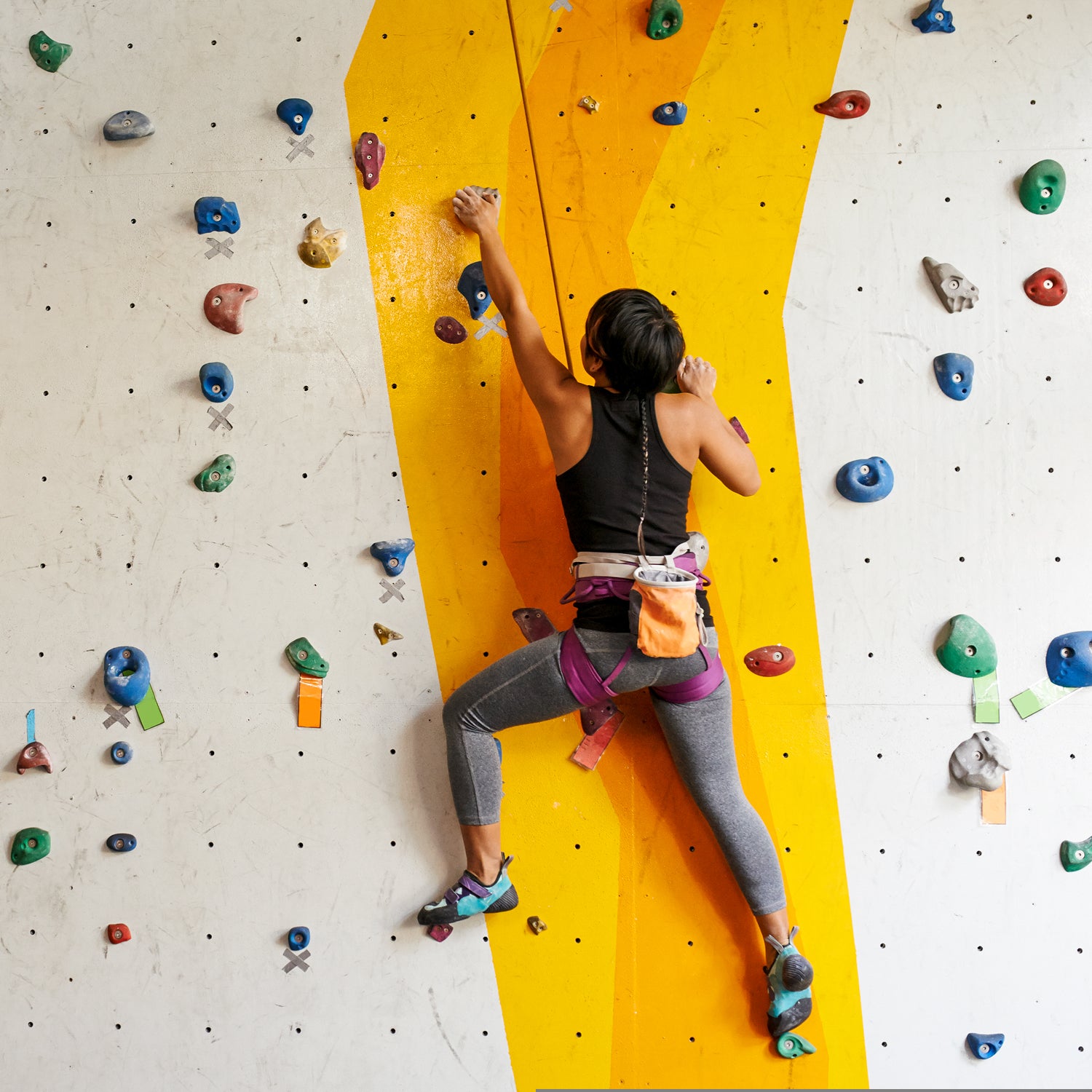When Steve House and Scott Johnson published their book Training for the New Alpinism: A Manual for the Climber as Athlete back in 2014, they waded into a longstanding debate: Do climbers, as House and Johnson argued, really need to work on their aerobic endurance in the same way that runners and cyclists do? Or does their endurance just need to be “good enough,” like how a baseball pitcher needs to be sort of fit but doesn’t need to run marathons?
With climbing now an official part of the 2020 Olympic program, sports scientists are taking a closer look at the sport—and the latest study, by researchers at the University of Milan, offers a revised take on the importance of endurance for climbers.
The researchers aren’t the first team to investigate the aerobic demands of climbing, of course. One of the most frequently cited climbing studies is , which found that climbing routes rated 7b in the French system (around 5.12b) used less than half the maximum rate of oxygen consumption (VO2max) that the climbers could produce while running. The conclusion—and in some ways still the conventional wisdom—is that climbers are unlikely to be limited by their aerobic fitness.
Other studies have found similar results, but they all face some fairly significant methodological issues. For one thing, climbing isn’t a smooth, continuous motion like most endurance sports. It’s a mix of sustained tension and dynamic motion, big moves and little ones, aerobic and anaerobic energy. To get a decent estimate of energy demand, you need to average your measurement over a relatively long period of time.
With this in mind, the new study put 13 Italian climbers through two different VO2max tests. One was a fairly standard test on a stationary bike, with the volunteers pedaling at successively greater power in four-minute stages, with five-minute breaks between stages, until they reached exhaustion. The other VO2max test was the same, but instead of doing it on a bike, they did four-minute stages on a treadwall moving at progressively faster speeds up a 6c (5.11b) route until they reached exhaustion.
The treadwall they used was a Climblock Rotor, which is a cylindrical wall, with a maximum height set to ensure that the climbers were always on a negative slope of at least 120 degrees. Here’s what that looked like, with the climber wearing a mask to measure oxygen use:

One question the researchers wanted to explore was the relationship between heart rate and oxygen consumption. Can you use a heart rate monitor to get a reasonable estimate of how hard a climber is working aerobically? You can do that with runners and cyclists—but again, in climbing, some of the particular characteristics of the sport make heart rate a less reliable proxy. For one thing, being anxious about the prospect of falling can raise your pulse. The same is true for exercising with your arms above your head—your heart has to pump blood against gravity—and for prolonged isometric contractions, when you’re hanging onto a hold without moving.
As expected, the heart rate for a given level of oxygen consumption was higher during climbing than cycling, particularly at low and medium intensities. Or to put it the other way around, climbing with a heart rate of 120 beats per minute is not as good an aerobic workout as cycling with a heart rate of 120. The differences weren’t huge, though—generally on the order of ten to 20 beats per minute.
There were also some differences depending on the climber’s ability level. Seven of the subjects were characterized as “advanced” (with best of at least 7a/5.11d), while the other six were “elite” (at least 8a/5.13b). The biggest contrast was predictable: The elites were more efficient than the advanced climbers, needing less oxygen and a lower heart rate to climb at any given speed. This measurement is the analogue to running economy as an efficiency metric in runners. Watching good climbers flow up a wall, it’s easy to see how technical skill results in better economy.
The biggest surprise in the study was the VO2max values attained. In the cycling test, the average peak was about 54 ml/kg/min; in the treadmill test, it was about 52 ml/kg/min. Unlike the French study from the 1990s, where climbing used barely half of their maximal aerobic capacity, these guys were essentially climbing right at VO2max, “thus questioning the current belief that maximum aerobic fitness is not an important requirement for climbing,” the authors write.
I’m not entirely sold on this argument. By the time they maxed out, the elite climbers were scooting up the treadwall at a rate of 11.8 meters per minute (the advanced climbers averaged 9.2 meters per minute). That may well be a severe aerobic challenge, but how often are climbers actually trying to sustain that sort of speed for minutes on end on real rock? Just because climbing can be an aerobic challenge doesn’t mean it is in practice.
Of course, talking about “the aerobic demands of climbing” as if climbing is all one thing is misleading anyway. Some critics argue that the three-discipline format planned for climbing’s Olympic debut, which includes sport climbing, bouldering, and speed climbing, is akin to asking runners to compete in both the 100 meters and the marathon. (A more accurate comparison would probably be the decathlon, where runners compete in the 100 and 1,500 meters.) The physiological demands of each discipline will be slightly different, and the winner may well end up being someone who’s simply good at all three, rather than truly great at one or two.
Alpinists like Steve House, meanwhile, are in another category altogether. When he and Johnston argue that climbers should train like endurance athletes, it’s because the challenges they tackle range from hours to days long—and often at high altitude. For that sort of climbing, there’s no doubt that aerobic fitness is a crucial prerequisite to success.
To me, the Milan study suggests that in that vast middle ground between bouldering and Everest, the role of aerobic fitness may be greater than previously thought. For a novice climber like me, though, the reality remains simple: I can only dream of the far-off day when my forearms and grip get strong enough to make climbing aerobically challenging.
Discuss this post on or , sign up for the Sweat Science , and check out my forthcoming book, .


